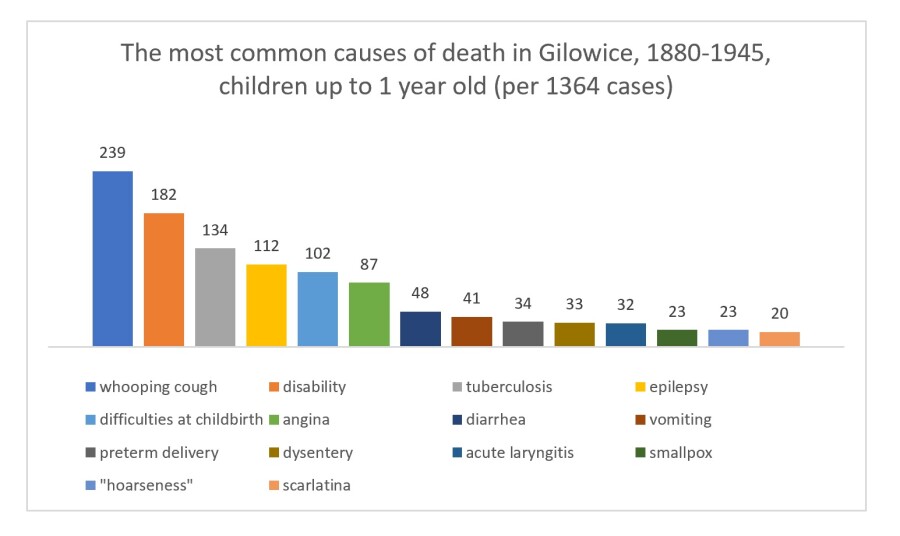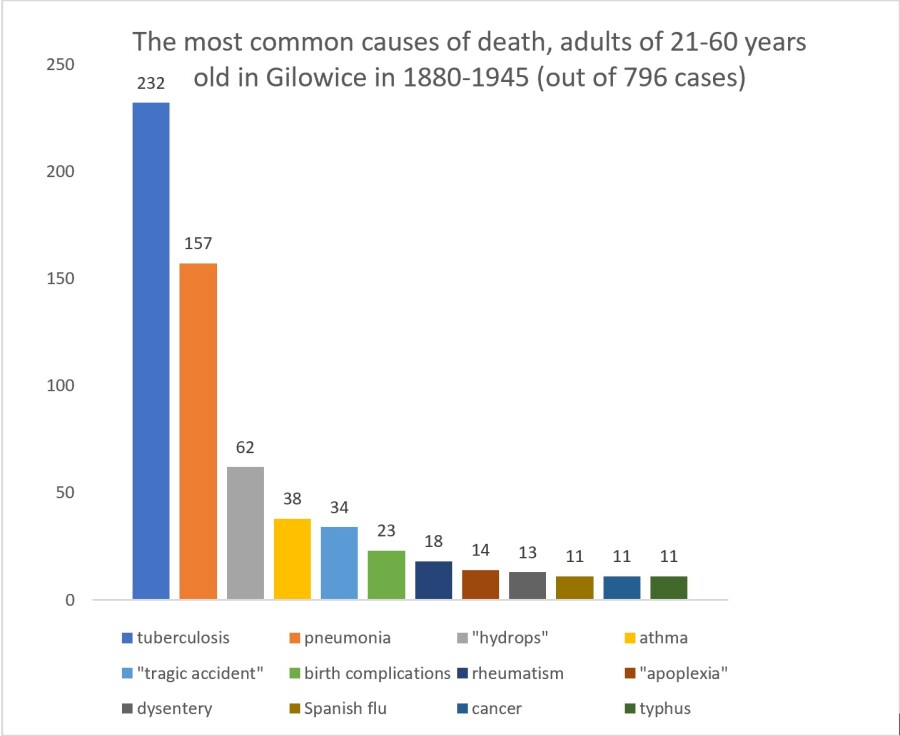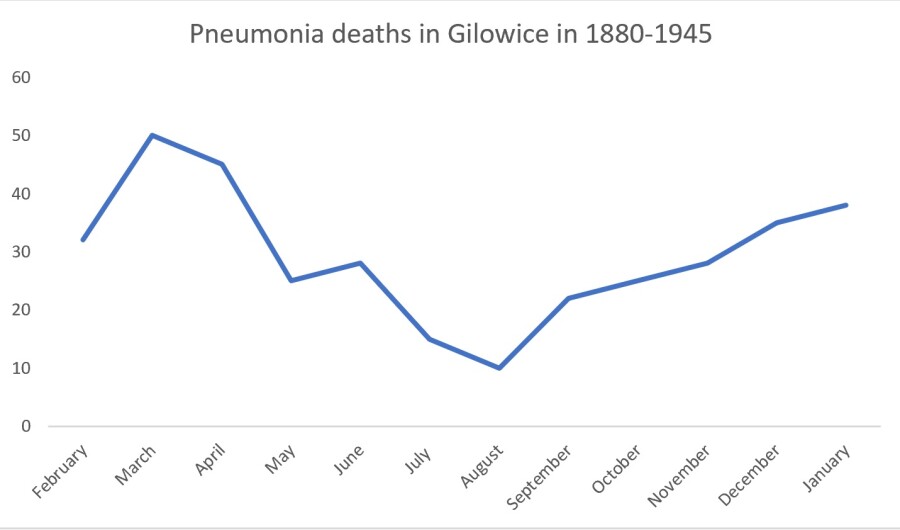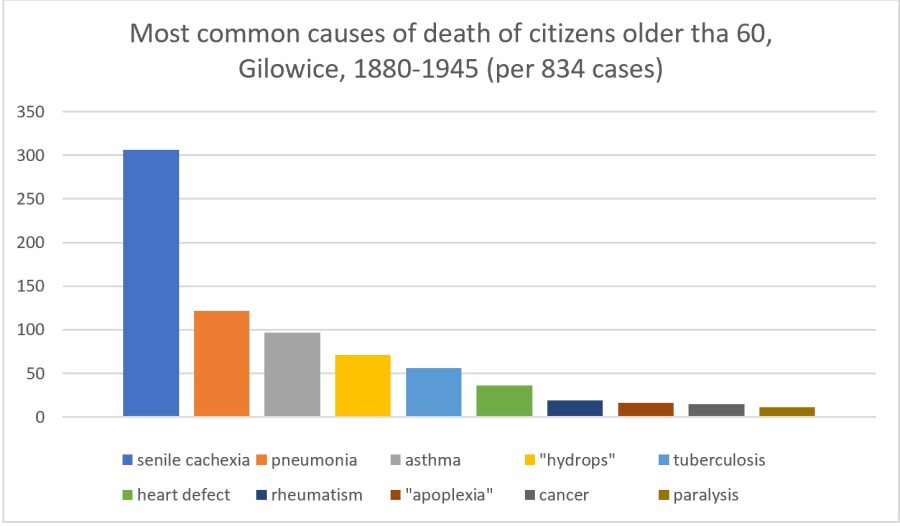Yes, I admit that the idea of exploring the causes of death for our ancestors was instigated by the present and sad corona-virus situation.
But for time travel and exploring our past which I love doing, there’s also another message that I would like to pass on with this post. And that is that things today are not that bad if you look back in time and compare. We are much better prepared to deal with problems now. We are in a much better position than our ancestors were despite so many tragic deaths, the economic decline and the inconveniences connected with social distancing. This situation will be fixed sooner or later while it was impossible in the past.
Today, we all have a chance to experience how fragile the lives of our ancestors always were.
It has all happened before but I will not focus on epidemics. We will study the common causes of deaths in a typical Galician village in the late 19th– early 20th century to get a general picture, and try to understand why and at what age our ancestors died.
We will use the help of Piotr Kolpak, a Polish historian, and some of the data he collected when researching the metric records of Gilowice near Krakow. At the time of research, the Gilowice population was about 2000 people.
I chose to go with Galicia since most of my roots come from there. Gilowice was located in western Galicia. However, we can suppose that the situation was about the same in eastern Galicia (or even worse,) and in other areas we often research: Bukovina, Volyn and others. Thus, this information can be interesting for readers whose ancestors come from these regions, as well.
Yes, there will be some statistics provided below. I do not like digging into numbers a lot. However, I think that this information is very descriptive, and studying it can let us make some very interesting conclusions.
Before we get to explore what really happened in our ancestral towns and why people died, I think it is important to say a few words about the sources of data and their reliability.
Metrical records are an important source of information, and they became much more precise after the imperial patent of February 20, 1784, which introduced some basic principles of metrics and obliged parish priests to keep record books. Each death entry had to contain the following information about the deceased: the date of death and funeral, exact place of residence, name, surname, social status, basic information about the immediate family, information on religious affiliation, sex, age, and, finally, the circumstances of death. The entry was supplemented by information about the priest who gave the last sacraments, conducted the funeral mass and (in most cases) made the record.
According to the additional order of October 21, 1796, the metrical entry had to be made by the priest on the basis of a “posthumous card”, prepared by the so-called “corpse viewer”, and financial penalties were imposed for keeping parish registers carelessly. However, I think that this was not always enforced, as there is a huge percent of error in the books, especially considering the level of medicine at that time. We know how messy these records can be, and we can often see the “ordinaria” (ordinary) cause of death included in so many records, whether it was a child or a middle-aged person.
In any case, “Libri Mortuorum” contains lots of information to analyze and help us learn about the past. So, shall we see what happened in Gilowice in 1880-1945?
Children and teenagers (0-20 years old)
3888 deaths took place in Gilowice in 1881-1945 in general. 2018 of them were “infans” deaths which equates to 52% of all deaths. “Infans” are children up to the age of 7. It is quite a shocking statistic!! Things were the worst in the last decade of the 19th century when this rate rose to 60%.
The following chart shows us what could happen in the 1st year of life:

As you can see, whooping cough (tussis, tussis convulsive, coclus) was the most common cause of death of children up to 1 year old. It lasted until a vaccination was introduced in 1927. At that time the number of cases went down to zero and the next case appeared in 1931 only.
We can add another shocking detail here: 72% of all registered cases of deaths of extramarital children (filius (-a) illegitimus (-a)) were stillbirths and babies! We can connect it to the fact that extramarital children were condemned to social exclusion along with their their mothers. Because of the fear of life-long shame the mothers often did not care properly for the newly born children.
Besides the diseases mentioned above, we also have a lot of pneumonia, “tragic accident”, diphtheria, “hydrops” and encephalitis among the causes of death of 1-7 year-old children. However, whooping cough was the biggest problem.
For the 8-20 year-old age category, the most common cause of death was tuberculosis. It killed every fifth of them. Tuberculosis turned into epidemics in 1895 and 1919 killing numerous children and adults from the same family or in the neighboring houses. No wonder! Oskar Kolberg (1814-1890, Polish ethnographer and composer) said that children infected with tuberculosis were commonly treated with a bath in dishwater or a bath with a live dog or cat. After the procedure, when the tuberculosis was supposed to have passed on to the animal, the animal was thrown away from the home!
Adults (21-60 years old)
It appears that respiratory diseases were the cause of almost more than half (58%) of deaths of adult citizens that took place in Gilowice in 1880-1945. Have a look at the chart:

Again, tuberculosis is the main problem and it was a serious civilization disease of monstrous size in Europe in the 19th – the beginning of the 20th century. It was the biggest threat for 30 year-old citizens of Gilowice.
We can see pneumonia here and it was the cause of about 20% of deaths. Moreover, it even prevailed over tuberculosis in the age group of 40-50 years old. Let us have a look at the distribution (approximate) of pneumonia during the year:

As you can see, the peak of cases occurred in March and April. It causes some associations, doesn’t it?
Adults 60+
Few people lived to old age in the 19th century (it is really rare to find entries for 70 + year-old citizens in death records of that time), and the completion of sixty years of age was symbolically seen as entering the final stage of life. The chart below will tell us about the most common causes of death in this age group:

Again, we can see pneumonia and asthma right next to senile cachexia as the main causes of death.
What is that “hydrops” that we also see so often? It is a Latin word and a historical medical term for the symptom of accumulating excessive amounts of fluid in tissues and natural body cavities. It does not appear in modern medical terminology. The correspondent symptom is called ascites and it is caused by liver and kidney diseases, heart failure, sepsis, cancer or tuberculosis. “Apoplexia” most probably refers to a stroke.
We can suppose that most people died in Gilowice at home (read more about the topic of funerals here). There is only one record in the metric book which tells us about a patient who died of tuberculosis in a hospital in the district center.
Social conditions, low hygiene, excessive drinking (read more in one of our previous posts), the fear of hospitals and doctors among rural populations, as well as their absence or low number made the chances of fighting diseases for village citizens quite low, to say nothing about epidemics. Medical care improved a lot in the 1st half of the 20th century, but it was still often unattainable for village populations.
As I have said before, we do have much better means and knowledge to cope with these kinds of challenges today. I am so happy that we are not trying to treat coronavirus with a bath in dishwater, or a bath with a live dog or cat, instead of working to develop a vaccination. I wish a lot of health to everyone! We’ve just got to be careful, helpful and patient.
I also invite you to follow Andriy Dorosh on FB not to miss our further publications and check out our virtual tours offer which is the way to visit your ancestral towns today, when regular travel is not possible.
Source: P. Kolpak. What did our ancestors die of? at zywiecinfo.pl